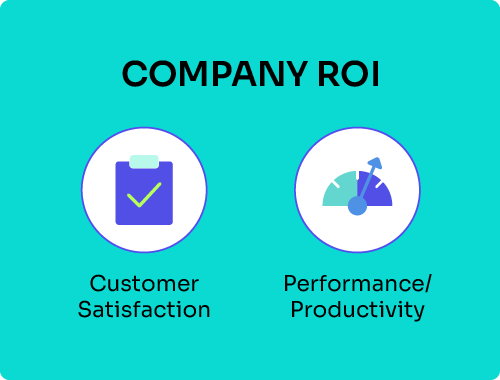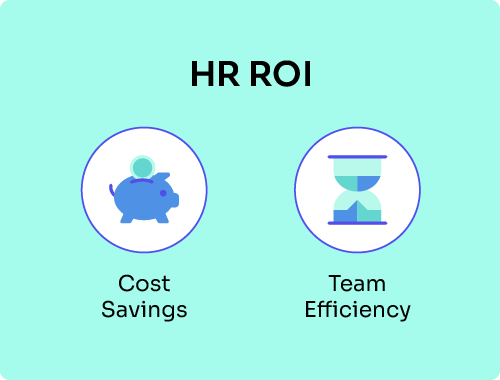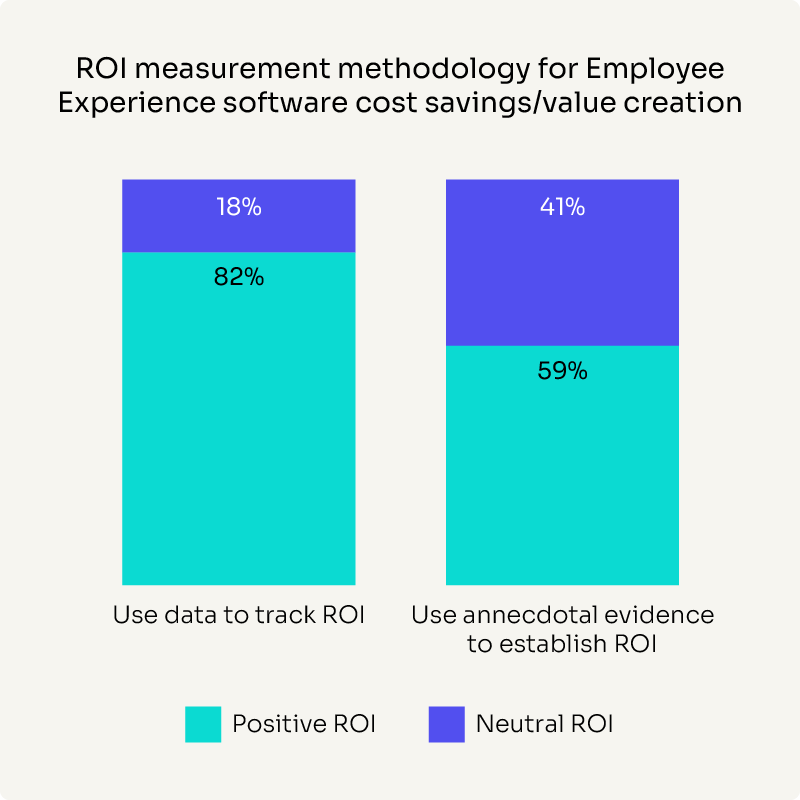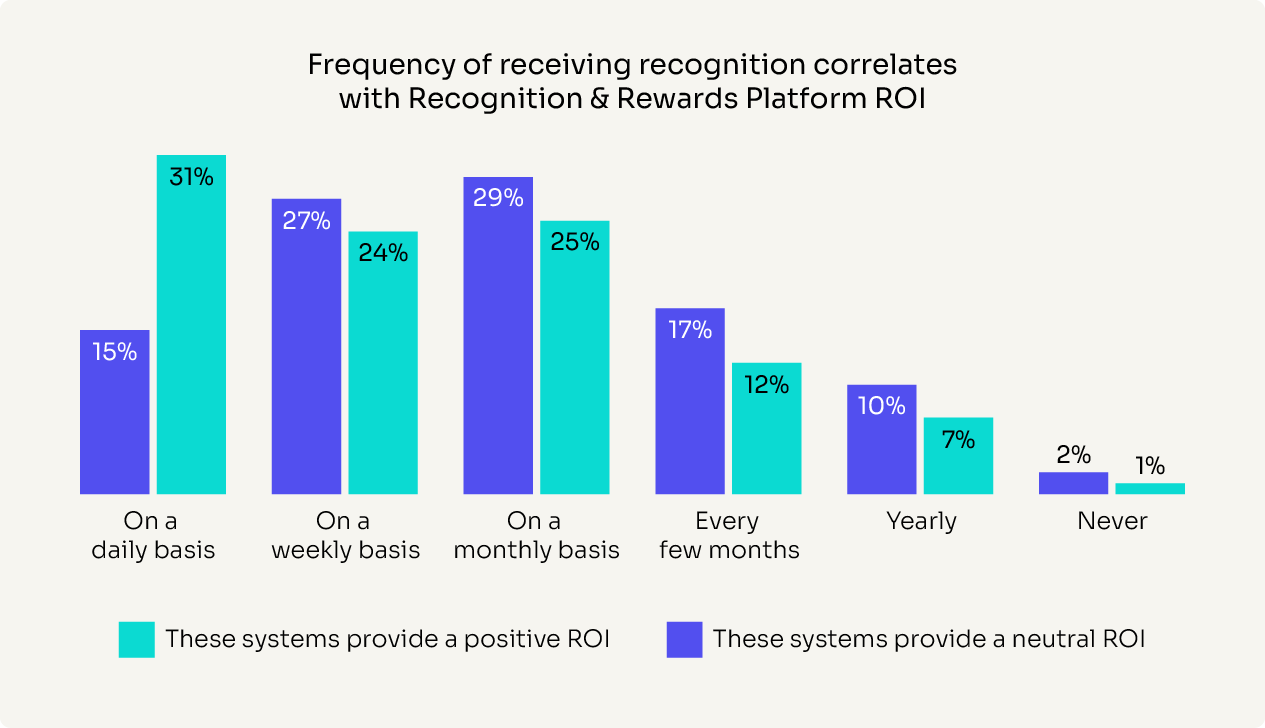Investing in Employee Experience
software delivers significant ROI.
How do we know?
WorkTango surveyed 1,077 North American HR leaders and discovered that organizations see a 2-3x return on their Employee Experience software investment.
Keep reading to learn more about the three most common types of ROI, and the best practices to follow to achieve similar ROI for your organization.
Real ROI Results
Until recently, many employers viewed Employee Experience (EX) technology as an expensive investment necessary to keep employees satisfied, without any real return on investment (ROI). However, the results of our recent study debunk this misconception.
Out of the 1,077 organizations who invested in EX technology:
65%
Improved employee performance
58%
Improved employee retention
54%
Increased customer satisfaction
EX investments represent low risk and high potential reward. They help employers connect employees across hybrid environments, create a continuous culture of appreciation, and enable every team member to perform at their highest level. 93% of companies surveyed for this report achieved a positive (or at least neutral) ROI from their EX investments.
On-Demand Webinar
How to Unlock Employee Engagement ROI
Check out our on-demand webinar featuring Ben Eubanks, Chief Research Officer at Lighthouse Research & Advisory, to hear live commentary on the report findings.
Watch a snippet from the webinar by clicking the 'play' button on this video!
3 Pillars of ROI
Companies typically measure the ROI of EX software by tracking metrics from one or more of three ROI pillar areas. We recommend identifying and tracking 1–2 core ROI metrics to get you started.

People ROI includes metrics such as Employee Engagement Index scores, employee Net Promoter Score (eNPS), or Employee Retention numbers.

Company Performance ROI includes business-critical metrics that impact customer retention, revenue, and other numbers, such as Customer Satisfaction scores, Net Promoter Scores (NPS), and Support scores.

HR ROI includes metrics such as cost savings on consolidated rewards run through a platform compared to previous expense report costs or by calculating time saved through automation by the labor costs of internal resources.
Real ROI Example
Credit union RBFCU reduced turnover by 17% and improved customer service scores when they began using Recognition & Rewards software.
“Employees are more consistently giving good service thanks to our Recognition & Rewards platform. If we treat each other well [by using the platform], we are seeing that there’s a return on investment to our members.” - Eva
RBFCU isn't alone — 65% of organizations in the study found that investing in employee experience software improved their employees' productivity and performance.
3 Best Practices for Achieving EX ROI
Organizations should follow the below best practices to maximize the ROI of their Employee Experience investments.
Best Practice #1
Prioritize data-based measurement of EX program impact over anecdotal evidence.
High ROI companies invest in employee survey technology or recognition and rewards technology to achieve specific employee retention, engagement, and satisfaction outcomes. They set specific goals and measure against them over time to prove ROI. Reporting and analytics capabilities are the top features that high ROI companies look for when evaluating EX technologies.
Companies that use data to evaluate value and/or cost savings are five times more likely to say they have a positive ROI from EX technology investments.

Best Practice #2
Align early with executive leadership on what success looks like for EX investments.
When it comes to the results executive leadership prefer to see from EX investments, increased employee productivity, retention, and customer satisfaction top the list. Early alignment on what success looks like for your program is key to meeting and exceeding expectations.
- Select one or two metrics from the 3 ROI pillars based on your company’s objectives.
- Get your leadership team to agree on the importance of those metrics.
- Track those metrics over time to demonstrate the ROI of your program.
Best Practice #3
Encourage and incentivize EX platform adoption and frequent use.
It may seem obvious, but once you invest in a platform, employees actually have to use it to generate positive ROI!
Organizations that achieve positive ROI from their employee experience technology investments do so by actively encouraging program participation and platform utilization across all levels.

Get the Full Report
We've highlighted just a few findings from the ROI of EX Software Report. Click below to see them all!